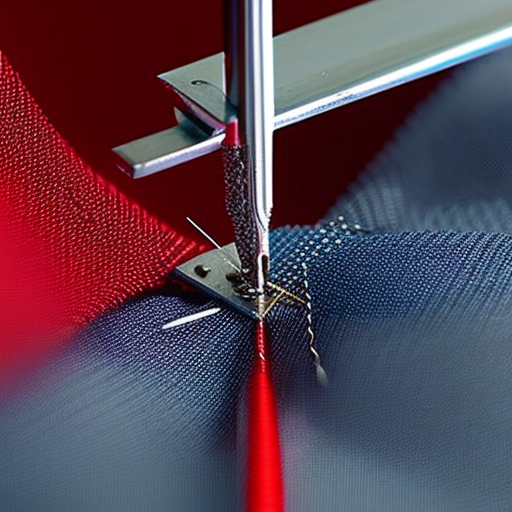sewing-needle-method.jpg” alt=”” style=”display: block; margin: 0 auto; width: 50%;” />
The sewing needle method is a popular technique used in the art of sewing and embroidery. It involves the use of a fine, pointed needle to stitch fabric together or add decorative designs.
Materials Required
- A sewing needle: Choose a needle suitable for your fabric and desired stitch type.
- Thread: Select a thread that matches the color and weight of your fabric for seamless stitching.
- Fabric: Use any fabric of your choice to practice or create beautiful garments.
- Thimble: Optional, but recommended to protect your fingers while sewing.
- Scissors: Essential for cutting thread and excess fabric.
- Pins: Useful for holding fabric pieces together before sewing.
Steps to Follow
- Choose the appropriate needle for your project, ensuring it is sharp, long enough, and suitable for your fabric type.
- Cut a length of thread, typically around 18-24 inches, and thread it through the eye of the needle. Tie a secure knot at the end.
- If required, secure the fabric pieces together using pins to prevent them from shifting during the sewing process.
- Hold the needle between your thumb and index finger, ensuring a comfortable grip.
- Insert the needle into the fabric at the starting point of the seam or design, pushing it completely through.
- Pull the thread gently so that the knot touches the fabric, securing it in place.
- Bring the needle up again from the underside, a short distance away from the starting point, creating the first stitch.
- Continue this “up and down” motion, spacing your stitches evenly according to your design or sewing requirements.
- Once you reach the end or desired stopping point, make a small knot on the underside of your fabric to secure the stitches.
- Trim any excess thread, and admire your neatly sewn fabric or decorative design!
Tips and Tricks
- Practice good posture and relax your muscles to prevent strain or fatigue while sewing.
- Use a thimble to push the needle through tough or multiple layers of fabric.
- Experiment with different stitch types such as running stitch, backstitch, or even decorative stitches to add unique flair to your projects.
- Ensure your stitches are neither too loose nor too tight to maintain a professional finish.
- Always double-check your fabric type and needle compatibility for a smooth sewing experience.
Remember, practice makes perfect! The sewing needle method is a fundamental skill that can be honed over time, allowing you to unleash your creativity and create beautiful, personalized pieces.




